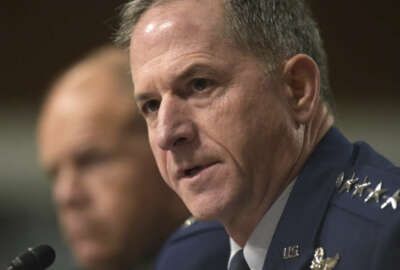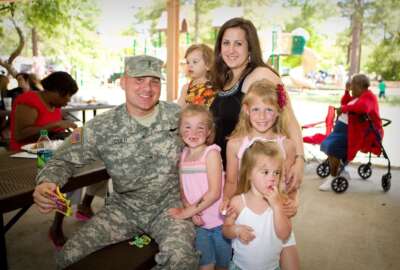
Military’s role in response to coronavirus outbreak is growing
The Pentagon's role in responding to the coronavirus outbreak in the U.S. is rapidly expanding, with the likely deployment of Navy hospital ships and Army field...
WASHINGTON (AP) — The Pentagon’s role in responding to the coronavirus outbreak in the United States began to rapidly expand Wednesday as officials announced that two Navy hospital ships and two Army field hospitals were preparing to deploy to help overburdened regions.
The latest moves are aimed at taking the pressure off local hospitals so that they can free up rooms and staff to deal with virus patients. Military hospital ships and field units are geared toward treating trauma cases.
The military moves, however, face limits. It will take as long as two weeks for the USS Comfort hospital ship to get to New York City, where the governor has been pressing for medical help.
And there are logistical and legal concerns about expanding the military’s role in civilian affairs, such as tasking it with enforcing quarantines. Defense officials also want to be careful not to do anything to weaken its ability to defend the nation.
A look at the military’s role in the crisis:
WHAT THE MILITARY IS DOING
The hospital ships are not on their way but are gathering staff and preparing to go.
The USS Mercy hospital ship, which is based on the West Coast, will be ready to move out “in days,” according to officials, and the USS Comfort is undergoing maintenance in Norfolk, Virginia, and will head to New York City within two weeks.
Navy officials are trying to expedite the Comfort’s departure. It was not yet clear where the Mercy will go, but it will be somewhere on the West Coast.
Air Force Brig. Gen. Paul Friedrichs, the surgeon for the Joint Chiefs of Staff, said the plan is to staff the ships with the typical mix of medical expertise, which primarily involves trauma treatment. The ships will take non-COVID-19 patients, easing the trauma treatment load on civilian hospitals.
He said staffing decisions will be based on what local leaders need and will mainly involve active-duty military personnel.
The Army, meanwhile, is preparing to deploy two field hospitals, according to Army Secretary Ryan McCarthy. One defense official said the two field hospitals will go to New York City and Seattle, two cities with the greatest need.
The official spoke on condition of anonymity to discuss details not yet made public.
Friedrichs said Army field hospitals will be able to provide about 1,000 beds. He said they have not put reserve medical units on alert because of concerns about taking those people out of the civilian jobs in the health care industry.
Defense Secretary Mark Esper said Wednesday that 1 million respiratory masks were immediately made available to the Department of Health and Human Services, and 4 million more will follow. The Pentagon also will provide to civilian agencies as many as 2,000 special-purpose military ventilators, he said.
Also, Army scientists are researching and testing vaccines for the coronavirus, in coordination with civilian agencies. On Tuesday, Esper visited Fort Detrick in Maryland, where the research is underway.
In addition, the Pentagon continues to provide housing at four military bases for some passengers taken from the Grand Princess cruise ship, which was hit with a cluster of coronavirus cases. It also has made available housing at other bases for people entering the U.S. at certain civilian airports and needing monitoring.
The most extensive role for the military so far is for the National Guard, which is being called up by governors to provide a range of support. At least 2,000 National Guard members in 23 states are working on virus support and response. Some are helping at state emergency operations centers; others are providing transportation for civilian health care providers; and some are collecting and delivering test samples.
What the military is considering
There are many more ways the military could assist in the COVID-19 crisis, and Pentagon leaders said those discussions are going on continually with federal and state officials.
Friedrichs told reporters Monday that defense officials are trying to identify “what’s within the realm of the possible,” while also spelling out what the trade-offs for that would be.
For example, Friedrichs said, officials are wary to mobilize large numbers of National Guard members because it would take them away from their civilian jobs, which in some cases are in health services already engaged in fighting COVID-19.
Esper has said he is considering activating National Guard and Reserve units for federal duty to help states with planning, logistics and medical support “as needed.” Such a move would need approval by President Donald Trump.
What the military could do in an extreme emergency
The Defense Department has a detailed pandemic response plan that lays out the myriad things the military can do if requested, including a last-resort role in helping to impose quarantines and border restrictions.
The military could be called on to help establish “mass casualty” treatment sites, provide shelter for displaced persons and help provide postal, power, water and sewer services, food deliveries and mortuary tasks. Troops also could provide logistics, communications and other support for law enforcement and the National Guard. Drafted and overhauled several times in recent years, the military’s plan is closely guarded and officials decline to discuss details publicly.
Officials, however, say that there is a broad assumption that local law enforcement, border control officers and the National Guard under the governors’ command would be the first line of defense to stem the spread of any virus through travel restrictions at the borders and along state lines or outbreak areas.
Positive cases of coronavirus in the military
So far, 49 members of the military have tested positive for the virus, along with 14 Defense Department civilians, 19 military dependents and seven contractors.
For most people, the new coronavirus causes only mild or moderate symptoms, such as fever and cough. For some, especially older adults and people with existing health problems, it can cause more severe illness, including pneumonia.
The vast majority of people recover from the new virus. According to the World Health Organization, people with mild illness recover in about two weeks, while those with more severe illness may take three to six weeks to recover. Worldwide, more than 200,000 cases have been confirmed, while more than 8,500 people have died.
___
The Associated Press receives support for health and science coverage from the Howard Hughes Medical Institute’s Department of Science Education. The AP is solely responsible for all content.
Copyright © 2025 The Associated Press. All rights reserved. This website is not intended for users located within the European Economic Area.
Related Stories






